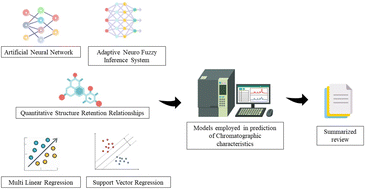Current trends in chromatographic prediction using artificial intelligence and machine learning
Abstract
Artificial intelligence (AI) and machine learning (ML) gained tremendous growth and are rapidly becoming popular in various fields of prediction due to their potential abilities, accuracy, and speed. Machine learning algorithms employ historical data to analyze or predict information using patterns or trends. AI and ML were most employed in chromatographic predictions and particularly attractive options for liquid chromatography method development, as they can help achieve desired results faster, more accurately, and more efficiently. This review aims at exploring various AI and ML models employed in the determination of chromatographic characteristics. This review also aims to provide deep insight into reported artificial neural network (ANN) associated techniques which maintained better accuracy and significant possibilities for chromatographic characteristics prediction in liquid chromatography over classical linear models and also emphasizes the integration of a fuzzy system with an ANN, as this integrated study provides more efficient and accurate methods in chromatographic prediction than other linear models. This study also focuses on the retention prediction of a target molecule employing QSRR methodology combined with an ANN, highlighting a more effective technique than the QSRR alone. This approach showed the benefits of combining AI or ML algorithms with the QSRR to obtain more accurate retention predictions, emphasizing the potential of artificial intelligence and machine learning for overcoming adversities in analytical chemistry.



 Please wait while we load your content...
Please wait while we load your content...